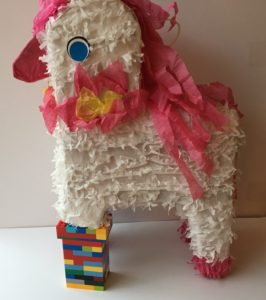Toys break. Wheels pop off axles, dolls lose their hair or even their heads, and the batteries inside mechanical pets weaken and die. As parents and teachers, we often try to protect young children from these events, repairing and replacing toys while they’re not looking, hoping the children won’t notice the patches and fixes. Yet children are often more resilient than we expect and a broken toy may actually be a wonderful opportunity for learning and growth.
Consider the impact on the earth
Before replacing a broken toy, include children in a discussion about whether the toy or parts of the toy can be reused or recycled. Even very young children can begin to understand why it’s important to reduce the amount of waste we throw away.
Questions to discuss include:
- What makes a toy fun?
- Can a toy with a missing piece still work?
- Can the parts of a broken toy be used to make something else?
For child-friendly information about recycling and the environment, PBS Learning Media offers many free resources to teachers and parents. I recommend this short video called “Bye-Bye Bottle” that shows how plastic is recycled:
https://wimedialab.pbslearningmedia.org/resource/ket-earlychild-ss8/bye-bye-bottle/#.WY8t1YqQy1s
Explore toy engineering
When a toy breaks or the cover of a toy comes off, the construction and design of the toy is often revealed. Many children are fascinated by how things work and are eager to see what mysterious parts and mechanisms are hidden inside their toys. Some children may enjoy dissecting and analyzing a broken toy. With a few tools and the gentle facilitation of adults or older siblings, young children can learn introductory engineering concepts about the design and function of wheels, gears, batteries, and springs. Taking apart a toy or household appliance such as a clock or a toaster is one of the activities described in my new book Robotics for Young Children: STEM Activities and Simple Coding (Redleaf Press).
Discuss the ethics of technology and innovation
Young children today are growing up in a world where technology is constantly changing. It’s easy to get caught up in the frenzy to try the next new gadget or upgrade our devices to the next level with all the newest bells and whistles. When a toy breaks, especially an electronic toy such as a robot or digital game device, this is a great opportunity to slow down, reflect, and help children think about the ethics of technology and innovation.
The big essential question is: What role do we want technology to play in our lives? Children can begin thinking about these ethical issues at a very young age. It’s important that adults and teachers guide children to become active creators of technology rather than passive consumers of fancy gadgets.

For example: The photo here shows a paper piñata with a prosthetic leg made out of LEGOs, the result of an activity that challenged preschool children to design and build an assistive device for this broken toy. This is just one simple way to begin engaging children in creating their own inventions and innovations that can help make the world a better place.
I believe that ethics can and should be an important part of STEM education. I’m hoping to talk about the role of ethics in computer science education at the 2018 SXSWedu conference. Please support my proposal in the SXSWedu Panel Picker, now through August 25 here:
http://panelpicker.sxsw.com/vote/70962


Recent Comments